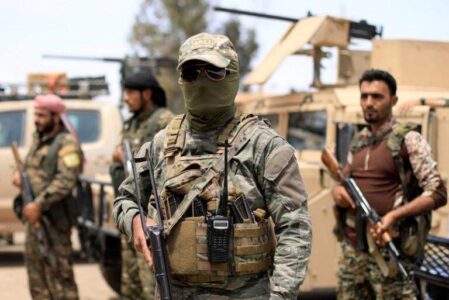
Fears mount of Islamic State comeback in eastern Syria
The civil activist believes that the conditions that led to the emergence of the Islamic State still exist, considering that the presence of Iranian militias and the Syrian regime forces in part of Deir Ezzor and Raqqa, as competitors to IS in the region, is no less dangerous than the presence of the group for the residents of the region.
Residents of areas controlled by the Syrian Democratic Forces (SDF) fear a possible IS return, the more uncertain the political situation in those areas becomes, which always increases in complexity with the intensification of the dispute between the US-led SDF and Turkey, which threatened military operations targeting the region.
Al-Najri considered that the IS group was expelled from the area not a short time ago but that it is still able to carry out attacks, and the SDF has not succeeded in establishing security and stability in it, not even in improving the living and service conditions of the population.
The spread of unemployment, poverty, illiteracy, lack of security and stability, and the continuity of the spread of extremist ideology among the population even after the defeat of IS are all conditions that help its return in one way or another, according to a number of Raqqa residents interviewed by Enab Baladi.
Raqqa-based psychologist Abdulmohsen Suleiman said the extremist ideas that IS left in areas under its control would remain as long as the authorities running the area do not work to remove them properly.
He pointed out that the area controlled by IS needs development projects that create job opportunities for young people to keep them away from unemployment so that they can not be used in IS revival.
The Syrian regime forces and allied Iranian militias, on the one hand, and the Kurdish-led SDF backed by the International Coalition, on the other hand, have shared the areas controlled by the Islamic State in Raqqa, Deir Ezzor, and the eastern countryside of Aleppo.
This was followed by the regime forces and Iranian militias carrying out many massacres and the arrest of large numbers of civilians, accusing them of operating within the ranks of the IS group during the period of its control over the region.
It is a policy that does not differ much from that of the US-backed SDF forces, as they launch frequent raids and arrest campaigns, in which civilians are killed, and arrest others on the pretext of belonging to IS, then return to release them over tribal mediation.
The human rights activist Jalal Khudair, of Raqqa city, considered that the return of the Islamic State may be more dangerous to the local residents, in addition to the possibility of many young men joining its ranks for fear of its influence on the one hand or because they did not abandon the extremist ideas that were implanted in them several years ago.
The rights advocate pointed out that the presence of thousands of former IS members who are in SDF prisons without trial and who indirectly threatens to release them if it is subjected to an expected military operation by Turkey also raises concern about the possibility of the IS group’s return.
The human rights defender stated that the escape of IS members from SDF prisons may be a repetition of the Iraqi Taji prison scenario that occurred in 2013 and led to the escape of Islamist prisoners from prison, who later formed the Islamic State group and took control of two-thirds of Syria and Iraq.
Source: Enab Baladi





